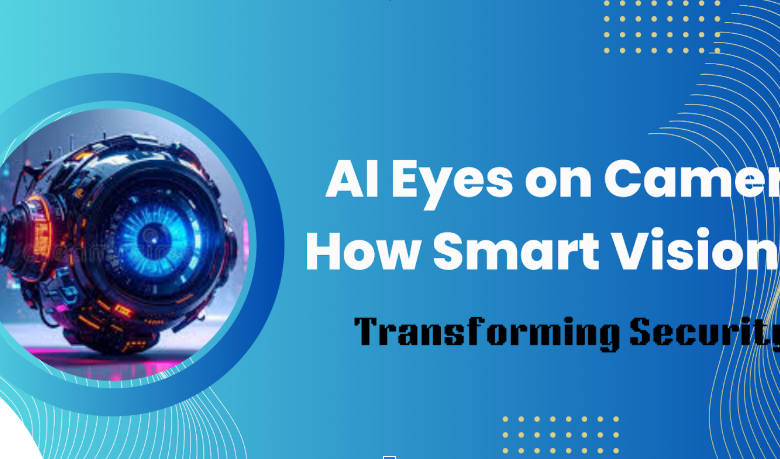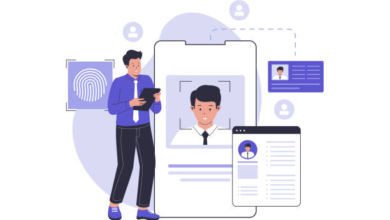AI Eyes on Camera How Smart Vision Is Transforming Security

Security has always been a top priority—whether it’s protecting homes, businesses, or public spaces. For decades, surveillance cameras have been the silent guardians, recording everything but rarely doing more than providing footage for review after the fact. That’s changing rapidly. With the rise of artificial intelligence (AI), cameras are no longer just passive observers. They are becoming smart vision systems active tools that detect, analyze, and even predict threats in real time.
This shift is revolutionizing the way we think about safety. AI-powered cameras, sometimes called “AI eyes on camera” are transforming surveillance from reactive to proactive. Let’s explore how this technology is reshaping modern security.
From Passive Recording to Active Monitoring
Traditional CCTV cameras require human operators to watch hours of footage, which can be inefficient and prone to error. Fatigue, distraction, or simply the overwhelming amount of video often means critical moments get missed.
Smart vision changes that. By combining cameras with AI algorithms, these systems can automatically identify unusual activity like a person loitering, a car parked in a restricted zone, or movement in a secured area after hours. This allows security teams to respond immediately instead of only reviewing footage after an incident.
Real-Time Threat Detection
One of the biggest advantages of AI vision systems is their ability to spot threats as they happen. Modern algorithms can detect everything from suspicious movements to unattended bags in crowded places. Some systems even recognize aggressive behavior before it escalates into violence.
In workplaces, AI eyes can detect unauthorized access attempts. In retail stores, they can flag potential shoplifting. For homeowners, they can differentiate between a delivery driver and a stranger lurking around the property. This level of intelligence reduces false alarms and improves response times.
Facial Recognition and Identity Verification
Facial recognition technology, powered by AI, has become one of the most talked-about aspects of smart security. These systems can match faces against databases to verify identities, grant access, or alert authorities to known threats.
In airports, for instance, facial recognition speeds up passenger screening while enhancing safety. In offices, it replaces ID badges with touchless access. While this technology raises valid concerns about privacy, when applied responsibly, it strengthens security without adding friction.
Smarter Analytics for Safer Cities
Cities are adopting AI-enabled surveillance to build safer environments. Smart cameras placed in public spaces can track traffic patterns, detect accidents, and alert emergency services faster than human reporting.
For law enforcement, AI-driven analytics help identify crime hotspots and allocate resources more effectively. Instead of reacting after the fact, authorities can use predictive models to prevent incidents before they happen.
Reducing Human Error
Humans are essential in security, but they’re not perfect. Long shifts and constant monitoring can lead to mistakes. AI vision reduces this burden by automating routine surveillance tasks. It tirelessly scans for anomalies, ensuring nothing slips through unnoticed.
This doesn’t mean humans are replaced it means they can focus on decision-making and intervention, where human judgment is most valuable. AI acts as an assistant, not a substitute.
See also: Building a Home Office: Essential Tech Tools for Remote Work
Enhancing Workplace and Home Security
Businesses are turning to smart cameras to protect assets, monitor access points, and ensure compliance with safety regulations. Factories can use them to spot unsafe behavior on the floor, while offices can secure sensitive areas with AI-powered access control.
For homeowners, AI-enabled doorbell cameras or outdoor systems provide more than video they recognize familiar faces, send alerts for unusual movement, and even integrate with smart home devices. That way, you’re notified if something’s wrong, even when you’re miles away.
Balancing Security and Privacy
Of course, the use of AI in surveillance raises important questions about privacy. Who owns the data? How long is it stored? Who can access it? These concerns are valid, and companies deploying AI vision must address them responsibly.
Transparent policies, anonymized data, and compliance with privacy regulations help balance the need for security with the right to personal privacy. As AI becomes more common in surveillance, finding this balance will be crucial.
The Future of AI Vision in Security
We’re only at the beginning of what AI-powered vision can do. Future systems will likely become even more predictive, capable of spotting potential risks before they unfold. For example, detecting patterns that suggest a cyber-physical attack, or monitoring body language to anticipate aggression.
Integration with other technologies like drones, IoT devices, and predictive analytics—will create a layered approach to security. Imagine a system that not only spots an intruder but also deploys a drone to track them until law enforcement arrives.
Final Thoughts
AI eyes on camera are more than just a technological upgrade—they’re a shift in how we approach security. By turning surveillance into an active, intelligent system, AI is making homes, businesses, and cities safer.
Of course, these benefits must be balanced with strong privacy protections, but when used responsibly, smart vision empowers people and organizations to stay one step ahead of potential threats.
The future of security won’t be about watching—it will be about understanding, predicting, and protecting. And AI vision is leading the way.





